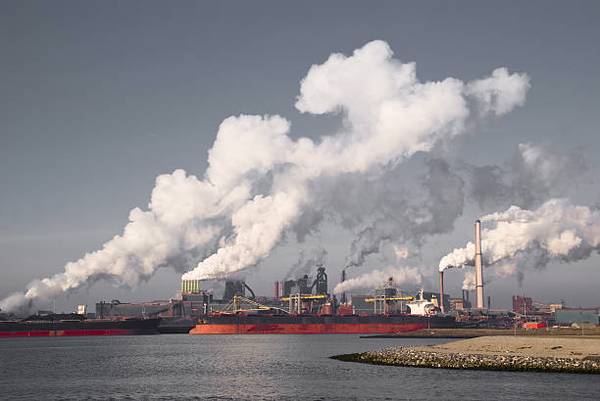55 CO2 carriers needed to ship more than 90 million mt/year of CO2 by 2030 – Rystad Energy
A recent study conducted by Norway-based Rystad Energy has revealed that carbon dioxide (CO2) emitters are looking for “flexible ways” to transport captured CO2 to offshore storage projects.
 PHOTO: Thick plume of smoke coming out of ships. Getty Images
PHOTO: Thick plume of smoke coming out of ships. Getty Images
A fleet of 55 CO2 carriers will be required by 2030 to ship more than 90 million mt/year of CO2, said the energy research and intelligence company.
Besides, 48 terminals will be needed to handle the import and export of the gas, it said.
“As the global carbon capture, utilization, and storage (CCUS) market expands, a significant hurdle in the value chain is the lack of available transportation and storage networks for projects,” stated the research firm.
Norway will account for about 30% of the world's total shipped CO2 in 2030, with 26 million mt/year. However, this would depend on whether enough storage sites can be developed in the country by then, Rystad Energy stated.
The Netherlands will follow Norway, with 23 million mt/year, followed by the UK, with about 20 million mt/year. “These totals include the shipping of domestically captured CO2 plus imports from other countries,” added the research company.
France is expected to ship 17 million mt/year of CO2 in 2030, followed by Belgium with 13 million mt/year, it said. Australia will ship and store CO2 from domestic projects and neighbouring Asia-Pacific countries, including Japan, the research company said.
 PHOTO: CO2 total volumes shipped (in grey) from exporting and importing countries in 2030. Rystad Energy
PHOTO: CO2 total volumes shipped (in grey) from exporting and importing countries in 2030. Rystad Energy
CO2 shipping is the most flexible way of "carrying carbon emissions over long distances at a relatively low cost," Rystad Energy said.
Meanwhile, the research firm highlighted the use of conventional marine fuels by the shipping industry to transport CO2, which raises a question about the environmental impact of the process.
The study has recommended that switching to liquefied natural gas (LNG) as a marine fuel could bring down a vessel's greenhouse gas (GHG) emissions by 18%, while using blue methanol could reduce it by 20%.
Additionally, transportation of CO2 through pipelines, which is currently the most common mode, is expected to expand further by 2030 to reach 330 pipelines. “These pipelines are ideal for transporting large quantities of CO2 to onshore storage sites or coastal terminals,” added Rystad Energy.
“Carbon dioxide shipping is a nascent market now, but it’s set to play a significant role in the global climate solution in the coming years,” stated the intelligence firm.
By Aparupa Mazumder
Please get in touch with comments or additional info to news@engine.online





